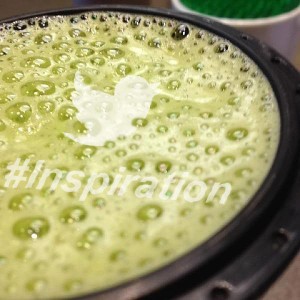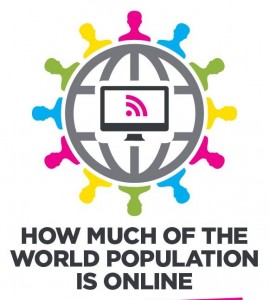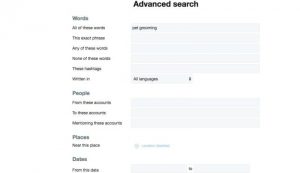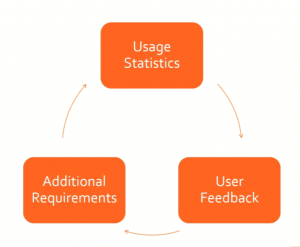On October 27th, digital advertising celebrated its 25th birthday! They say your 20s is the most important decade of your life. Let’s look back at what happened in the past 25 years of digital advertising’s formative history.
Always the journey, often the destination
Over the years, due largely in part to advancements in ad technology, advertisers have become more focused on the customer and more aware of the journey between awareness and conversion.
It’s not necessarily surprising, but always exciting to watch as marketers continue to get smarter about what ad formats and channels to leverage for each part of this journey—or what combination of cross-channel efforts led to the ultimate conversion.
Their strategies are constantly evolving as technology advances and new formats are introduced. With emerging technology like visual/voice search, chatbots, machine learning, and AR, we have a lot to look forward to in the next 25 years.
Also interesting is that Amazon was born in 1994, the same year as digital advertising, but only just became an advertising powerhouse in the last couple of years. While Facebook and Google have long been considered the duopoly of digital advertising, Amazon’s digital advertising offerings are now quickly gaining on the two tech giants, and advertisers are increasingly seeking ways to capitalize on the emerging platform. According to a recent survey, 60% of advertisers plan to increase their Amazon ad spend this year.
Digital ads have massively impacted businesses
The measurement capabilities of digital ads have led the industry to become more performance driven. Marketers are constantly being tasked to prove ROI. With advancements in digital ad technology, more than ever before, they now have the capability to link performance results back to particular campaigns or channels.
Improved insight into performance keeps advertisers accountable and encourages them to experiment with channels, formats, and new technologies to drive results.
Today, the ability to track and prove performance is even more valuable, and even more challenging, as advertisers increasingly leverage many different channels—like search, social, and eCommerce—simultaneously.
As these channels become more siloed, marketers can no longer rely on publisher tools for attribution and conversation metrics—it’s like allowing Facebook and Google to grade their own paper. Instead, the smartest marketers turn to third-party providers to understand and optimize performance and get a holistic, cross-channel view.
What’s cooking in the next five years?
The rise of Amazon as an ad platform has blurred the lines between search, social, and eCommerce, which will undoubtedly continue to shake up the ad industry. A huge chunk of product searches now begin on Amazon, for example, while Facebook and Google have invested heavily in eCommerce formats like Shopping ads and shoppable posts. These lines will only continue to blur as Amazon rivals—like Walmart and Target—look to emulate the eCommerce giant’s digital advertising strategy in the months and years to come.
These blurred lines are having, and will continue to have, a major impact on digital advertising strategy. Marketers will be forced to connect the dots across channels and view the customer journey holistically on their own, or risk falling behind the competition. With no incentive for publishers—i.e., Google, Facebook, Amazon—to share data across platforms, it falls on the marketer to obtain this comprehensive view from a third-party platform.
Despite the rise of eCommerce, search will continue to play a big role in the coming years. Last quarter, search volume grew 13% year-over-year and CTRs continue to increase, while CPCs decreased. The opportunity to engage more effectively with consumers at a lower cost—in combination with the introduction AI-driven technologies like responsive search ads and automated bidding—advertisers will continue to flex search across their global campaigns. It’ll be interesting to watch how this evolves, especially as more privacy regulations emerge over the next five years.
An online shopping explosion
There will be more than 300 million U.S. online shoppers in 2023. How do brands need to change what they’re doing to compete so that they find and engage with the right shoppers? One of the most important things to understand is the function of a particular ad format on a particular channel and its role in the customer journey.
There are so many formats emerging—from Stories to shoppable posts—and each one is designed to reach audiences at specific points in the journey. Google Shopping Ads, for example, are designed to move buyers from the consideration phase to conversion. Understanding these nuances, as well how these various ad formats can work together in a cross-platform approach, can help marketers avoid a siloed strategy and will propel the business in a competitive market.
The 30s: reaching new heights (and audiences)
Over the last 25 years, customers expectations have risen. Going into the next 10 years and beyond, marketers need to be more cognizant of how they’re targeting specific audiences, while still effectively allocating budget and calculating bids across channels. To optimize campaigns and truly drive performance, brands have a huge opportunity to leverage automated, AI-driven technologies that allow for more testing and ultimately smarter strategies.
It’s also important for brands to realize the value of their own data—whether it’s from a CRM, product sales, or inventory. Marketers can be much more effective with their ad campaigns when they leverage both first- and third-party data. Using both categories of data allows them to be aggressive when they expect good returns, and to pull back when performance is dipping. This type of strategy also provides an opportunity to scale campaigns more efficiently—a key component to remaining competitive.
Digital & Social Articles on Business 2 Community
(55)






